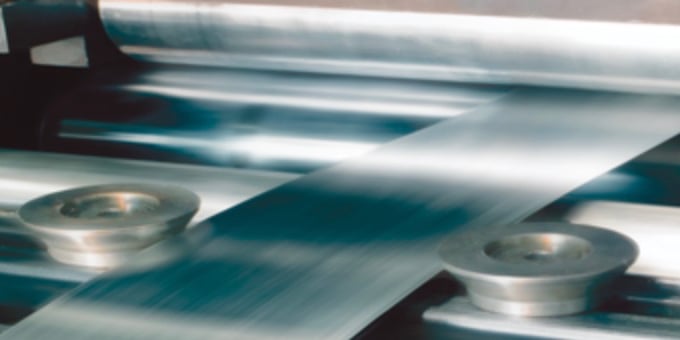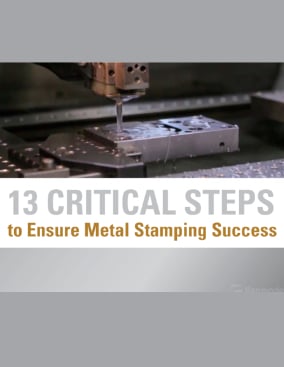If you’re responsible for designing or buying precision metal stamped parts, it’s important to understand when to use progressive die stamping versus transfer die stamping.
Historically, metal stamping companies performed one service - single stroke, short-run stamping. Today, precision metal stamping manufacturing techniques have evolved to meet the increasing demands of intricate components.
For simple parts, progressive or transfer metal stamping may not be the best option, but if you’re forming complex parts, one or the other is often the best choice. Both progressive and transfer die stamping is used to manufacture automotive, medical device, and electronic components.
How do you determine which method is best for your application?
First, you need to understand the different production methods so you can better identify the pros and cons.
Progressive Die Stamping Basics
A progressive tool can make simple or complex parts in very large quantities. Metal, in coil form, is fed through a progressive tool with a series of stamping stations that is run in a punch press to perform the operations. The material is uncoiled, straightened and then fed in precise increments into the tool. As the material travels through the tool, each station performs an operation that changes the flat coiled stock into a metal stamping. The action of each successive station adds onto the work of the previous stations. Once the material has gone through the entire progressive tool, the stamping is complete.
A progressive die is complex to develop, involving high-tech sensors and piloting to ensure the metal is fed precisely to each station. A progressive die can perform a number of complicated operations, such as:
- Blanking
- Coining
- Embossing
- Extruding
- Lancing
- Notching
- Perforating
- Piercing
- Piloting
- Shaving
- Forming
- Staking
- Drawing
- Tapping
Progressive dies can produce multiples of the same part or multiples of different parts from the same die, as in a family die or multiple-up die. See Using Multiple-Up Dies for Metal Stamping to Save Money and Boost Volume to learn more. A family die produces different parts that fit together in the finished product. Read The Advantages and Disadvantages of Running Metal Stamping Family Dies for details.
Transfer Die Stamping Basics
Transfer die stamping is similar to progressive die stamping, but the part is free from the metal strip. Instead of feeding the component through a series of stations, a mechanical transport system (or performed manually) is used to move the part from station to station. Transfer dies can include a single die, a number of dies, or machines arranged in a row to form a production line.
The transfer press process begins with a strip of metal fed into the first station where the blank is cut. The blank is then transferred mechanically(or manually) through various forming stations. Transfer die stamping is versatile, many part features such as chamfering, cut-outs, pierced holes, ribs, knurls and threading can be designed into the primary operations.
Some examples of when to use transfer die stamping include:
- Large parts that require transfer among several presses for completion
- Frames and structural components
- Shells
- Tube applications
How to Choose Between Progressive Die Stamping and Transfer Die Stamping
When deciding if progressive or transfer die stamping is your best option you should consider a number of variables.
|
Benefits of Progressive Die Stamping |
Benefits of Transfer Die Stamping |
|---|---|
| Suitable for producing components small to large components | Generally considered best for producing large parts |
| Most economical for the largest production runs | More cost-effective for short production runs |
| Faster production speeds | Carried out with independent dies that don’t require a sheet guide or lifter |
| Best for tight tolerances | More flexibility of finishes |
| Only requires one setup to produce completed parts | Uses single or multiple dies that often offer the benefit of lower tooling costs |
The best stamping method for your job will depend on the unique requirements of your application. By working with your precision metal stamping engineering team early in the process, they can help you determine which method is most suitable for your specific needs.


